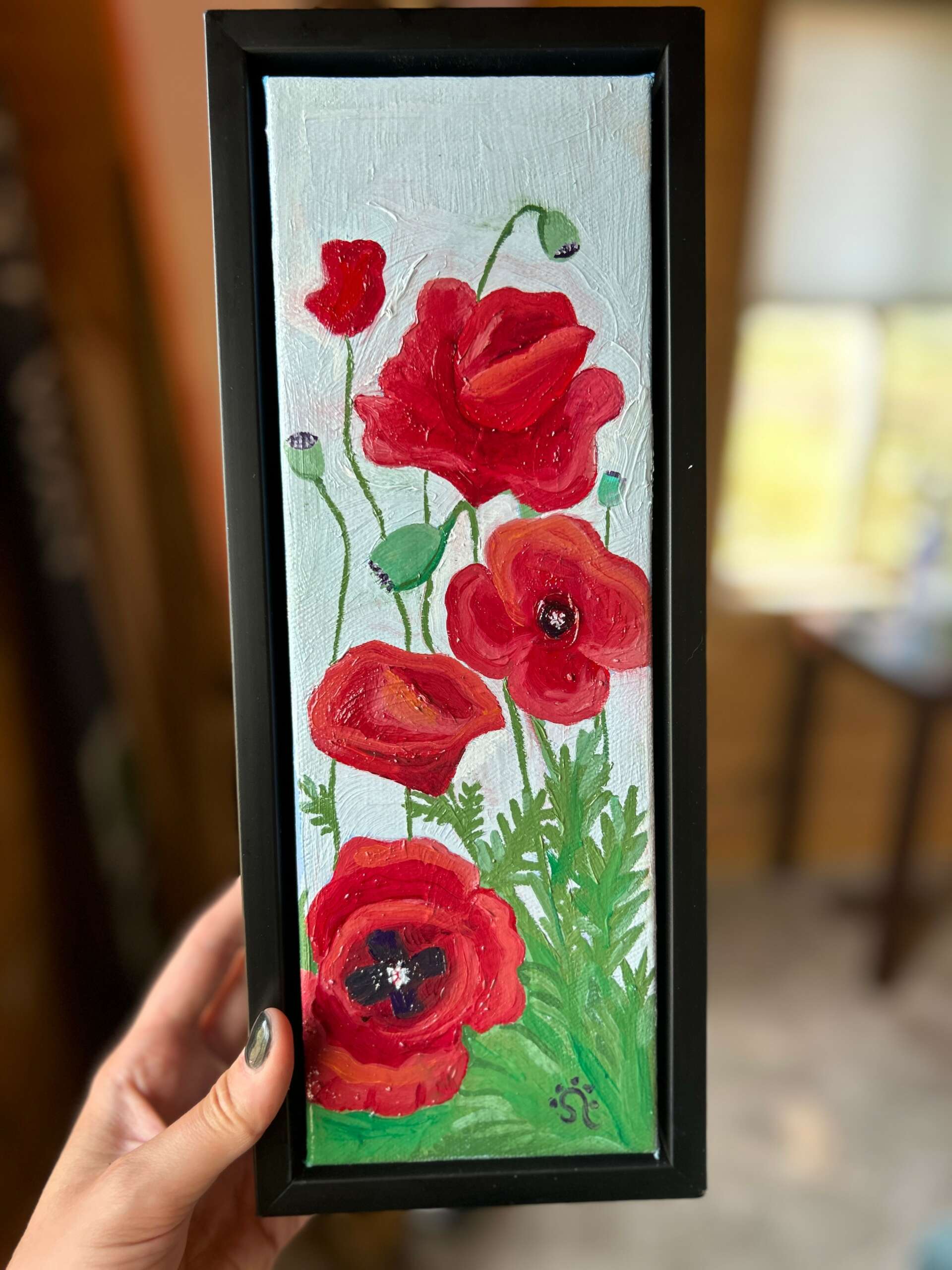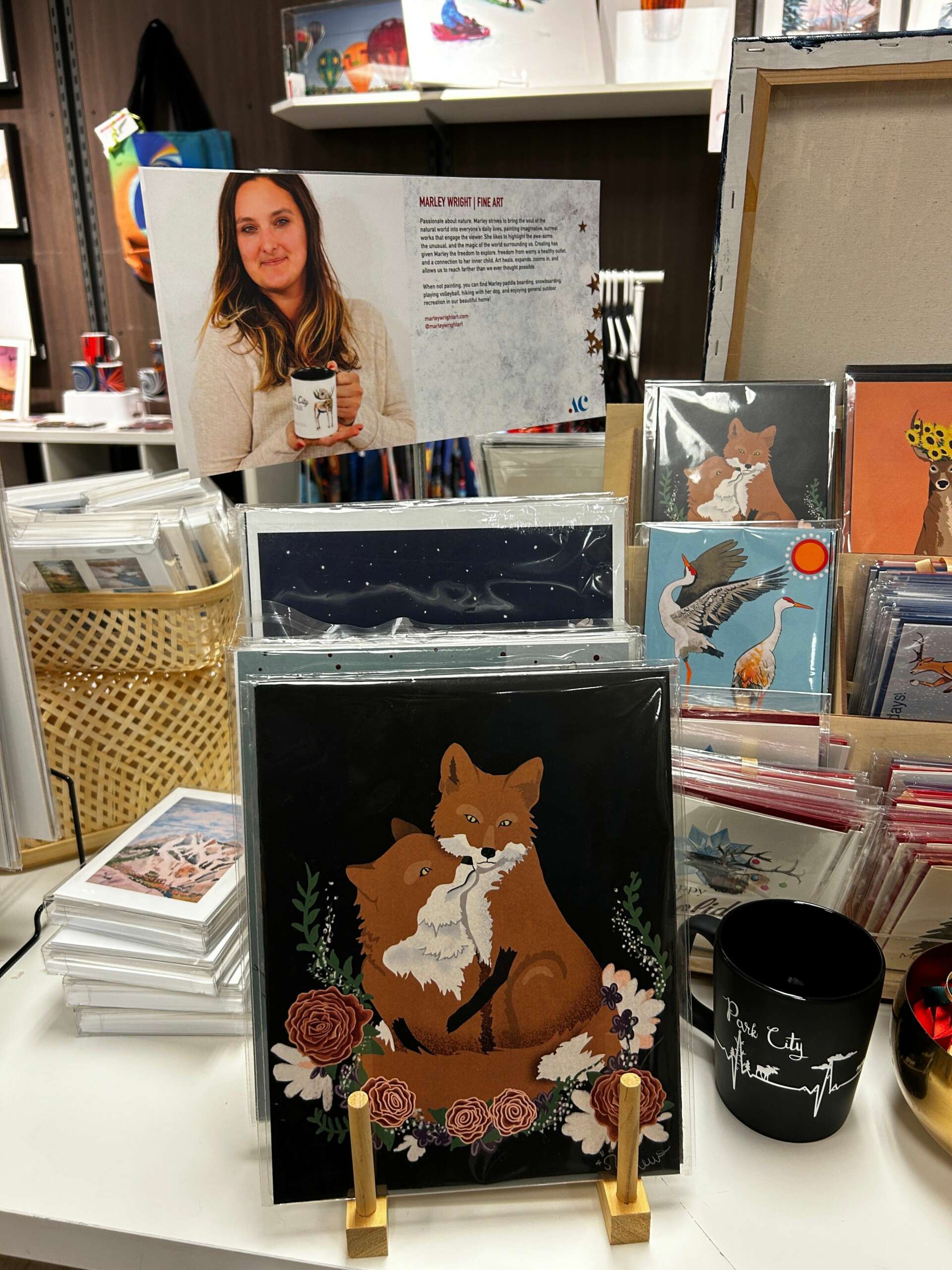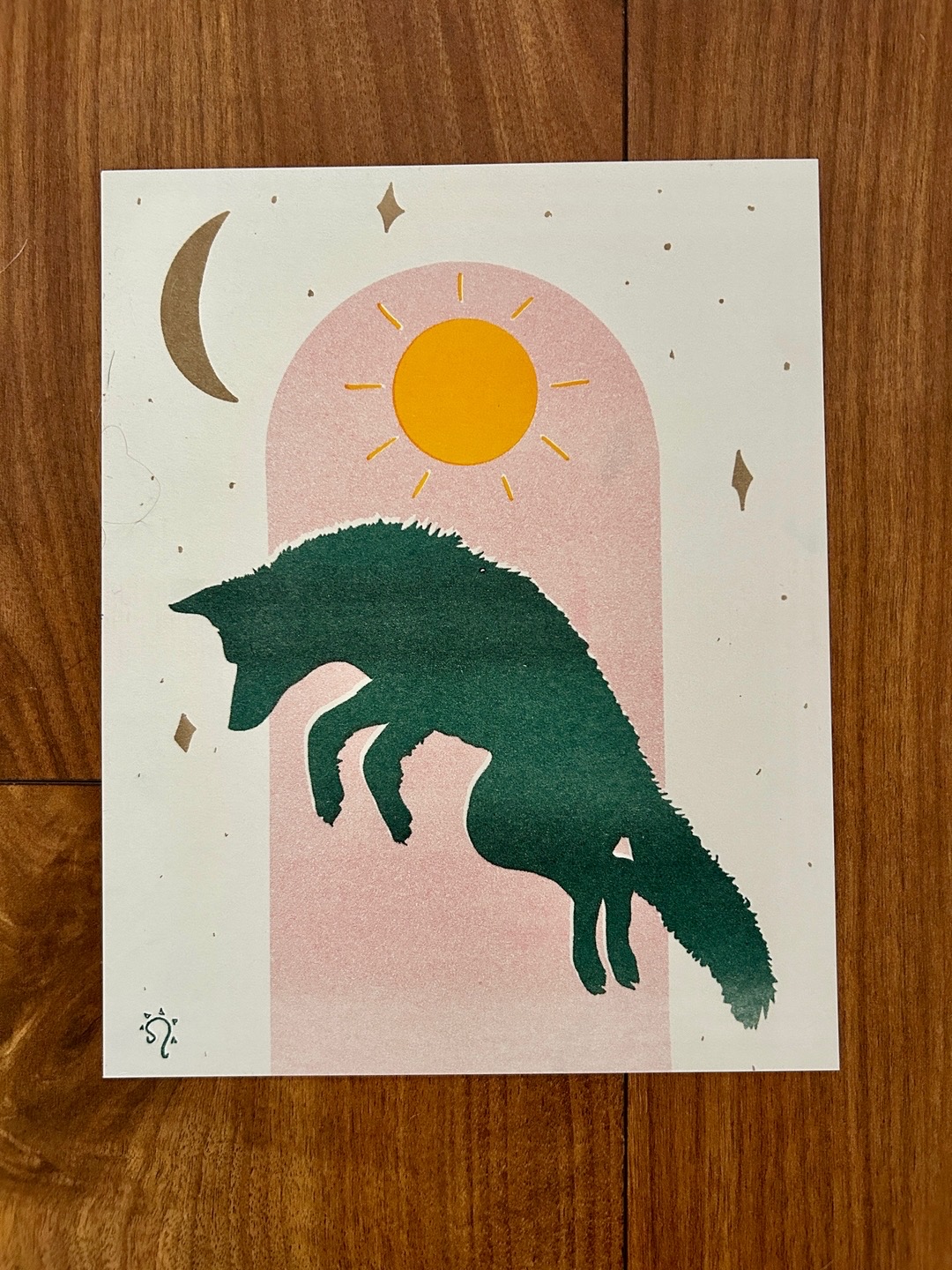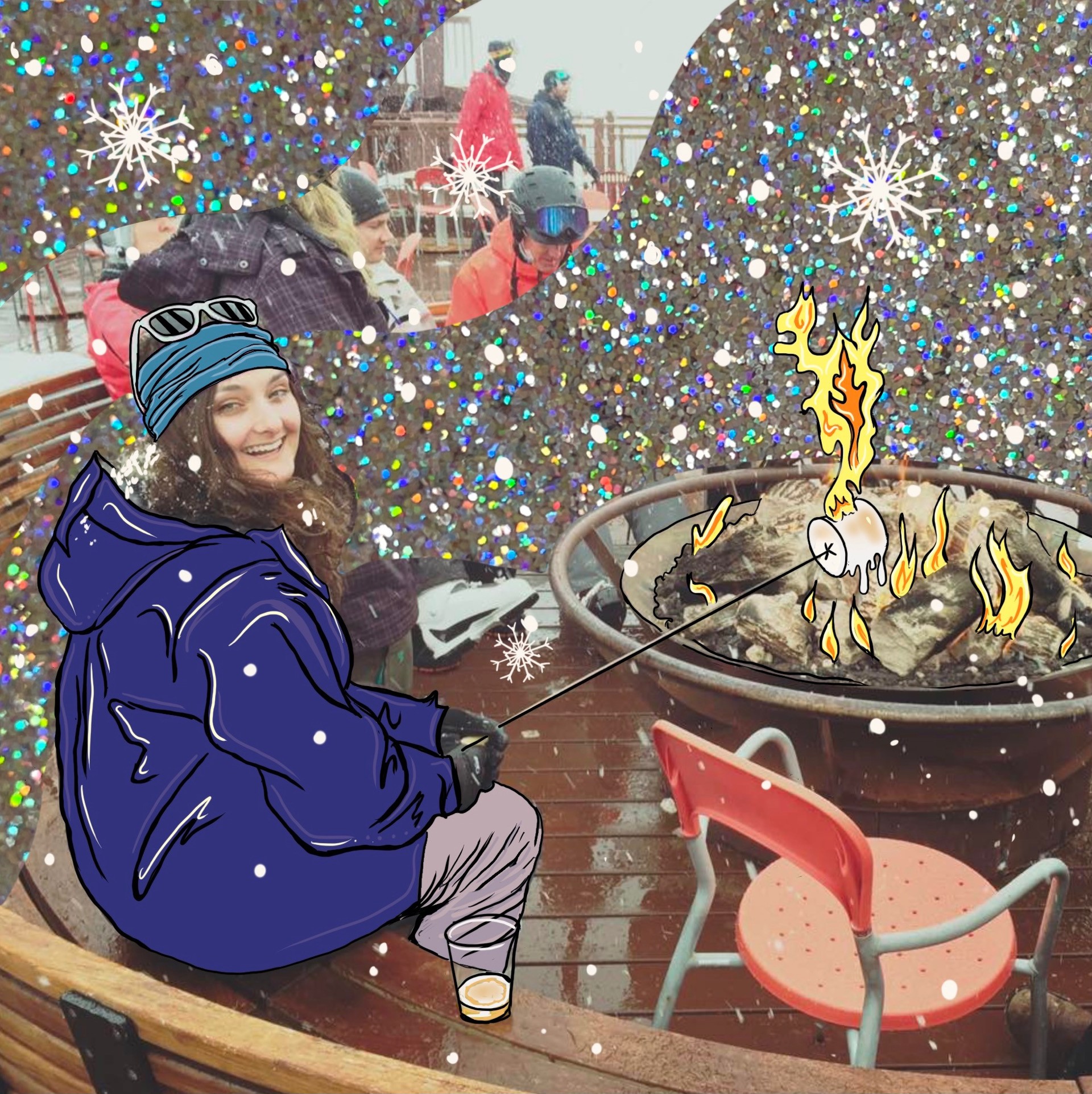We recently connected with Marley Wright and have shared our conversation below.
Hi Marley, thanks for joining us today. Did you always know you wanted to pursue a creative or artistic career? When did you first know?
I’ve been practicing art for most of my life and have always dreamed of turning it into a career. In 2008, I even attended art school briefly, but my art advisor crushed my confidence when they told me that making a living as an artist was as unlikely as becoming a movie star. Hearing that made me question my path and led me to explore other options, including moving to new places and trying different careers.
Then, in 2020, everything changed. When Covid hit, I was furloughed from my job as a massage therapist. I saw it as an opportunity to reconnect with my passion for art. I dove headfirst into learning everything I could about the art industry and building a sustainable creative career.
I’ll be the first to admit that I’m still in the building and learning phase—it’s a process with no shortcuts—but I’m determined. I’ve been steadily chipping away at my goals, and each step forward brings me closer to making this dream a reality.

As always, we appreciate you sharing your insights and we’ve got a few more questions for you, but before we get to all of that can you take a minute to introduce yourself and give our readers some of your back background and context?
I’m an artist and illustrator based in Park City, Utah, with a deep passion for wildlife, nature, and the creative process. My artistic journey began early in life—drawing was a regular activity growing up, and I vividly remember the moment I truly fell in love with art. It was Christmas of 2004 when I received my first acrylic paint set. I stayed up until midnight using every canvas in the box, and from that point on, art became the heartbeat of my life.
I’ve always been passionate about conservation, and my art aims to connect people with the natural world around them. I primarily work in oils because I love their flow and rich color saturation, which allow me to refine my work at a pace that feels natural and intentional.
I provide a range of creative services, from original paintings to surface design and illustration for licensing. I’ve also worked on exciting local projects, such as illustrating Deer Valley’s Patrol Dogs for their ski school and painting Johnnie Walker statues that will be displayed in Park City this winter.
What sets me apart is my dedication and persistence. Building a creative career is challenging, and there have been times when progress felt slow or even nonexistent. But I’ve refused to give up. I look for opportunities, put myself and my art out there, and embrace challenges as learning experiences. I believe that much of the “luck” I’ve had has come from this proactive approach—putting myself in the path of opportunity and staying committed to my dream.
I’m most proud of the steps I’ve taken to become an active part of the art community. From participating in local events like CreatePC to building a digital portfolio for art licensing, I’m constantly working to grow as an artist and expand my reach.
For anyone considering working with me or following my journey, I want you to know that my art is about connection—connecting to nature, to community, and to the joy of creativity. Whether through a painting, an illustration, or a surface design, my goal is to inspire and bring a piece of the beauty I see in the world to you.

In your view, what can society to do to best support artists, creatives and a thriving creative ecosystem?
There are countless ways to support artists in your community, and I have plenty of ideas—but I’ll try to narrow them down to the most impactful!
Supporting the artist in your family or friend group:
Start by helping amplify their voice. Share their social media posts, talk about their art with others, and introduce their work to your circle. Get curious about their creative process—ask questions about how they make their art, what inspires them, or what projects they’re working on. Showing genuine interest not only provides emotional support but also helps them feel seen and valued.
Supporting local artists in your community:
Stay informed about local events like craft fairs, markets, and art shows. Attend these events and shop locally whenever possible. Buying directly from artists doesn’t just support them financially—it also helps them hone their craft and build momentum to keep contributing to the community. Utah, for instance, has so many talented creatives with unique offerings, but you need to actively look for and engage with them. Even if you’re not buying, visiting markets or sharing an artist’s work with others makes a huge difference.
Supporting artists as a business or property owner:
Art has the power to transform spaces and engage audiences. Businesses and building owners can play a crucial role in fostering a thriving creative ecosystem by incorporating art into their spaces and campaigns. Consider purchasing original art for your workplace or commissioning a mural for one of your building’s walls (remember, every building has four sides—plenty of space to add vibrancy!). You can also hire illustrators to create marketing materials, social media posts, website headers, or even unique designs for merchandise like t-shirts.
By collaborating with artists, businesses can not only elevate their brand but also foster meaningful connections with their customers and communities. However, it’s critical to honor the time, skills, and efforts of the artists you work with. Treat them as the professionals they are—because they are.
Shifting the mindset around valuing art:
Unfortunately, there’s still a pervasive mindset in some circles that artists should work for exposure or participate in contests where businesses profit from their creations without fairly compensating them. This needs to change. Artists invest years into developing their craft, and their work deserves the same respect and compensation as any other profession. Whether you’re hiring an artist for a mural or purchasing a small piece at a market, recognize the value of their work and the effort it represents.
The takeaway:
Supporting artists is about more than just buying art for your home. It’s about fostering a culture that values creativity and the people who bring it to life. By amplifying their voices, engaging with their work, and treating them with respect, we can create a thriving ecosystem where artists and communities flourish together.

We often hear about learning lessons – but just as important is unlearning lessons. Have you ever had to unlearn a lesson?
A lesson I’m still working to unlearn—and one that I think many in the creative community can relate to—is battling imposter syndrome and perfectionism. These challenges often creep in during the early stages of my creative process, especially when I’m planning or brainstorming a new piece.
I find myself spending too much time searching for the “perfect idea” or the “perfect approach,” convinced that if I just think it through enough, the result will somehow be better. But the truth is, the more time I spend stuck in the planning phase, the more it stifles my creativity. Overthinking doesn’t necessarily lead to better ideas—it just slows me down.
The biggest lesson I’ve learned (and keep reminding myself of) is this: just start. Put pencil to paper, paint on canvas, or whatever medium you work with, and trust the process. Even if the idea doesn’t feel fully formed, the act of creating will help it take shape. Creativity thrives in action, not in perfection.
For anyone who struggles with the same feelings, my advice is simple: don’t let the fear of imperfection hold you back. Start where you are, with what you have, and let the process guide you.
Contact Info:
- Website: https://marleywrightart.com
- Instagram: @marleywrightart
- Facebook: https://facebook.com/marleywrightart
- Linkedin: Marley Wright





